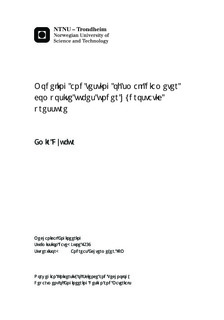Modeling and testing of small diameter composite tubes under hydrostatic pressure
Master thesis
Permanent lenke
http://hdl.handle.net/11250/242012Utgivelsesdato
2014Metadata
Vis full innførselSamlinger
Sammendrag
This thesis investigates the behavior of small diameter composite tubes that are exposed to external pressure. Composite tubes have a superior strength to weight ratio compared to steel tubes. The oil industry is facing new challenges and the demand for more robust materials is increasing. Prior to substituting steel material with composites in tubes, it is important to gain knowledge about the behavior of composite tubes and develop reliable analytical methods.An experimental and analytical study of small diameter carbon fiber tubes was carried out in this thesis. The tubes were made using filament winding with a layup of [±75] and a wall thickness of 1.5 mm. The tubes were tested under external pressure with optical fibers attached to measure the strain during the tests. A linear buckling analysis and Riks analysis was done using the Abaqus solver to predict buckling and compare strain results to the experimental tests. The transverse and longitudinal Young s modulus were experimentally found and implemented into the finite element analysis. The predicted buckling value deviated significantly from the experimental tests. In the experimental tests, the tubes buckled at 52.5% lower pressure than what was expected from the finite element analysis. The strain readings from the optical fibers gave higher values than the strains from the finite element analysis at equal pressures. However, strain at equal pressure might not be comparable because the tube from the analysis could withstand higher pressure before it started showing tendencies of buckling.In conclusion, the analytical model in this thesis has its weaknesses and can be further improved to capture the imperfections of the tube more accurately.
